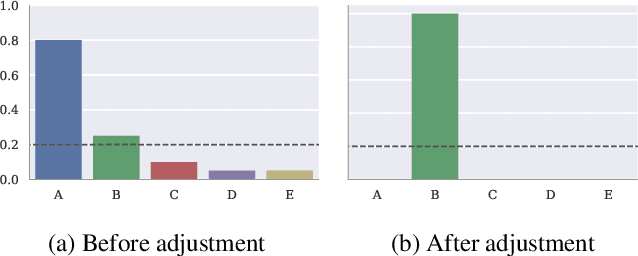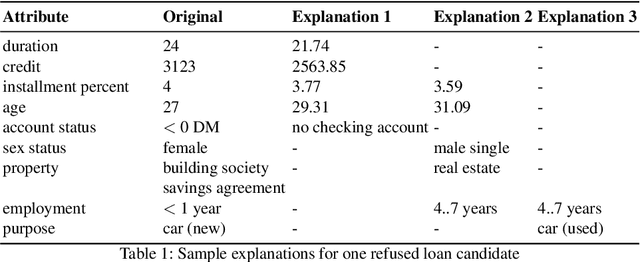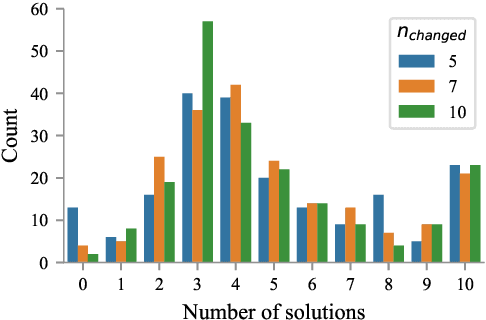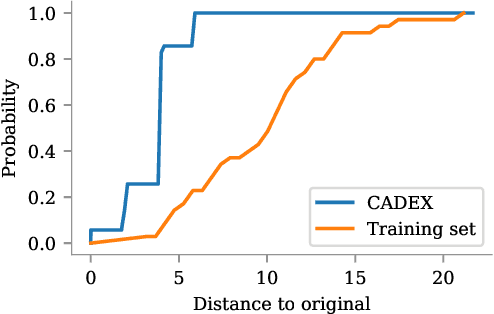Explaining Deep Learning Models with Constrained Adversarial Examples
Paper and Code
Jun 25, 2019



Machine learning algorithms generally suffer from a problem of explainability. Given a classification result from a model, it is typically hard to determine what caused the decision to be made, and to give an informative explanation. We explore a new method of generating counterfactual explanations, which instead of explaining why a particular classification was made explain how a different outcome can be achieved. This gives the recipients of the explanation a better way to understand the outcome, and provides an actionable suggestion. We show that the introduced method of Constrained Adversarial Examples (CADEX) can be used in real world applications, and yields explanations which incorporate business or domain constraints such as handling categorical attributes and range constraints.
 Add to Chrome
Add to Chrome Add to Firefox
Add to Firefox Add to Edge
Add to Edge